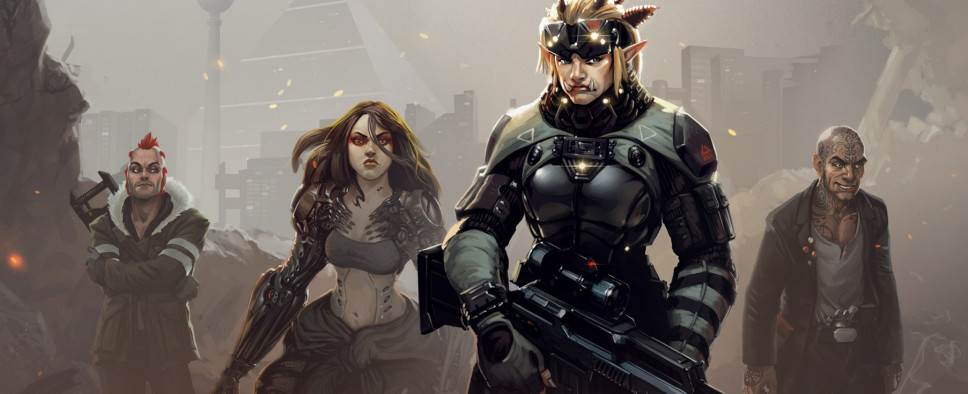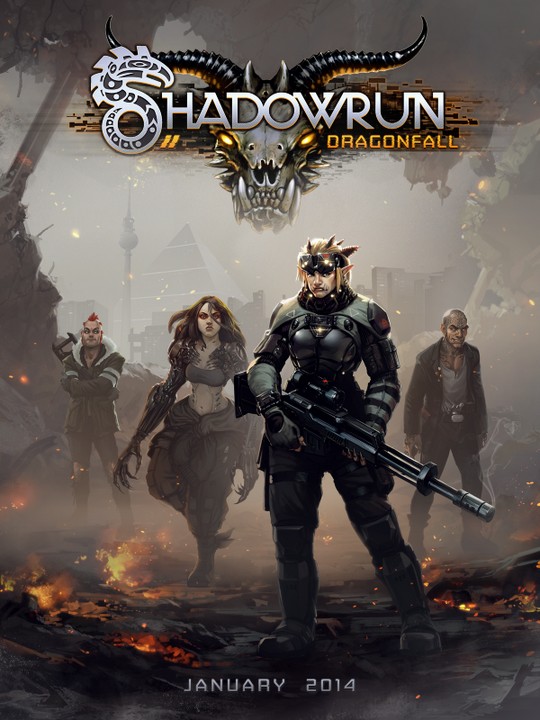Shadowrun: Dragonfall Review
-
Category: ReviewsHits: 15172

Article Index
Outside of dialogue skills, there's a variety of checks that involve attributes, skills, race and even items. Priority seems to have been given to skills that otherwise wouldn't feel too valuable, like Bioware, though, to be perfectly honest, I still wouldn't argue those skills are viable choices. It's also worth noting that the game seems to have taken a page from Fallout 2 and gave your companions a chance to make some checks for you. On one hand, it makes sense and reinforces the pen and paper narrative feel the campaign is trying to evoke, but on the other hand, it also lessens the impact of your character's build. There's always a straightforward way to complete most tasks anyway (usually involving plenty of combat), so perhaps being more restrictive would have actually helped each playthrough feel more unique. Finally, it should be noted that, just like the original game, all these interactions are handcrafted, and combat remains the sole activity to be strictly system-driven in the title.
Complaints aside, there's one thing I want to stress about the mission design in the title: it keeps getting better as you progress. Most games, including the original Shadowrun Returns, tend to peter out after the middle section (if not, sometimes, right after the beginning), but Dragonfall manages to introduce new plot points and challenges with ease, without relying on cheap gimmicks or corridor battle maps. It's an enormous improvement over the first campaign's ending, and bodes well for the developer's future.
Watch Your Back, Shoot Straight, Conserve Your Ammo
Combat encounters are also better designed and more varied than in Dead Man's Switch, but still err too much on the side of caution in terms of challenge. I died about two times in the entire campaign (I played on Normal) despite playing with a character that wasn't particularly optimized for combat (I used a high charisma Shaman), and both times were entirely due to my carelessness. In fact, in some instances the game has been made easier, as a character that falls in battle is automatically revived by the Trauma Kits in their inventory. It's also worth noting that, despite the side objectives, special mechanics and additional fail conditions that are often attached to the encounters, the relatively short length of the campaign (18/20 hours for me, if Steam is to be believed), and the new critters that have been added to the title, the combat still ends up feeling repetitive after a while. I'd honestly recommend trying to not purposefully get into combat encounters too often because, despite Harebrained's best attempt to shake up things (which were mostly successful, credit where credit is due), there's simply not enough meat to sustain the interest of a combat-oriented player for the entirety of the campaign.
That's not to say the few new additions are bad though. Sniper rifles are extremely powerful weapons that give their best at long ranges, incentivising the player to better study the layout of the area. Grenade launchers are far more situational, but there's no denying that lining up a shot when enemies are clustered up in the same space is satisfying. Throwing weapons aren't quite that useful in my experience (though I admit I might just not have learned how to use them properly), but at least it's now possible to build a character that uses Throwing Weapons as their main combat skills, given it now governs more than just grenades. Adepts' abilities have also been improved, and now sport passive bonuses that make the archetype far more playable. The new monsters that have been added by the expansion, while not as unique in behavior and abilities as I had hoped, at least offer that little bit of visual variety that was sorely lacking from the game at release. Even when put together, these additions aren't exactly game-changers, but it's that Dragonfall didn't only add a new campaign, a few portraits and some environmental assets.
I should also say that pretty much all the companions you run with are fairly useful in combat, although, unfortunately, there's no way to tinker with their gear and progression. At most, a player can give them additional quick-slot items to utilize during a run (you can't even take away the items that they already have to redistribute them). It's true that I never felt the need to give my companions more powerful gear and spells than what they had, but an additional layer of customization would have been well appreciated, and would also have given me an excuse to spend some of that excess nuyen I had earned, thanks to the game's excessively generous economy. Speaking of the economy, I unfortunately have to admit the gear progression in Dragonfall is just as uninteresting and linear as in the original campaign, with only a few, disappointing sidegrades to break the monotony. Alas.
Usability and Technical Improvements
While they technically have been introduced by patches, I can't conclude this review without talking about the game's quality of life improvements. Chief among them is the ability to save manually. This feature, pretty much a standard for most RPGs but strangely absent from the original title, greatly improves the flow of the game, and freed the developers to design larger, more complex areas with more opportunities for interactivity and more combat encounters. Harebrained Schemes also took advantage of their manual save system to place more autosave triggers, usually before and immediately after important quest developments. I still wouldn't recommend anyone to rely solely on autosaves, as occasionally the designers seem to have forgotten to place triggers after important mission-critical dialogue (see, for example, the final sequences of the APEX Rising mission), but there's no doubt that the game's saving system has been dramatically improved.
The stuttering I experienced during the original campaign has also been greatly reduced (though unfortunately not completely eliminated), but I also have to note that loading times seem to have been drastically worsened. There's also a new high resolution scaling mode for the UI, new translations for the game that can be selected from the options menu, and the game switches back to free movement in between encounters, so you won't find yourself locked in turn based mode in the larger combat-based areas. The game just feels overall more polished, and is far easier to recommend for a purchase now than it was at release.
Conclusions
Shadowrun: Dragonfall won't change the minds of those that hated the original campaign, but is likely to please all those who enjoyed it. Simply put, Harebrained Schemes has managed to polish their title and outclass their original content output, to the point that I'd recommend new players to start from the expansion rather than from the original campaign.
And it has a dog companion. Yes. A dog companion!


